1. The Rise of Dopamine Décor – Why Our Homes Need More Joy
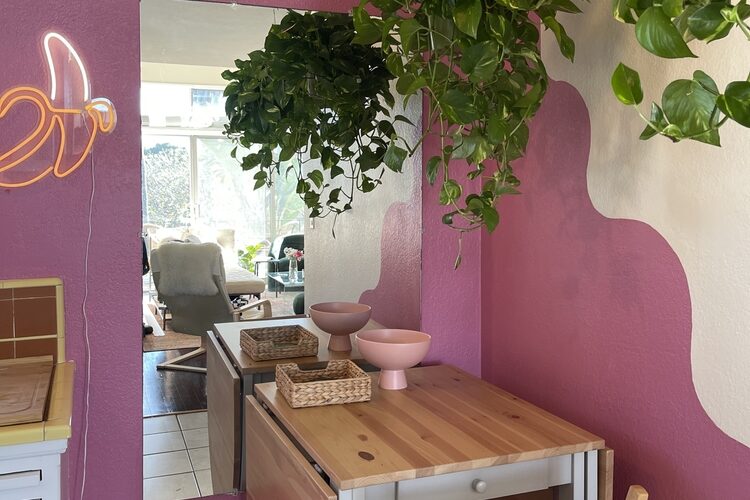
There’s a shift happening in interior design, and it’s not about following trends or impressing guests—it’s about happiness. Dopamine décor is a movement that prioritizes joy, color, and personality over neutral, minimalistic spaces. It embraces vibrant hues, sentimental objects, and playful elements that make a home feel alive. People are moving away from stark, magazine-perfect rooms and creating spaces that truly make them feel good. The goal isn’t perfection but personal happiness, allowing each room to reflect what sparks joy on an individual level.
This change comes from a deeper understanding of how our surroundings impact our emotions. Just like a favorite song or a nostalgic scent can lift our mood, our environment shapes how we feel every day. Bright colors, meaningful décor, and playful patterns all stimulate dopamine, the brain’s feel-good chemical. A home designed for happiness can boost energy, reduce stress, and even improve productivity. It’s not about overwhelming the senses but finding a balance between excitement and comfort.
2. Color Psychology – The Fastest Way to Boost Your Mood
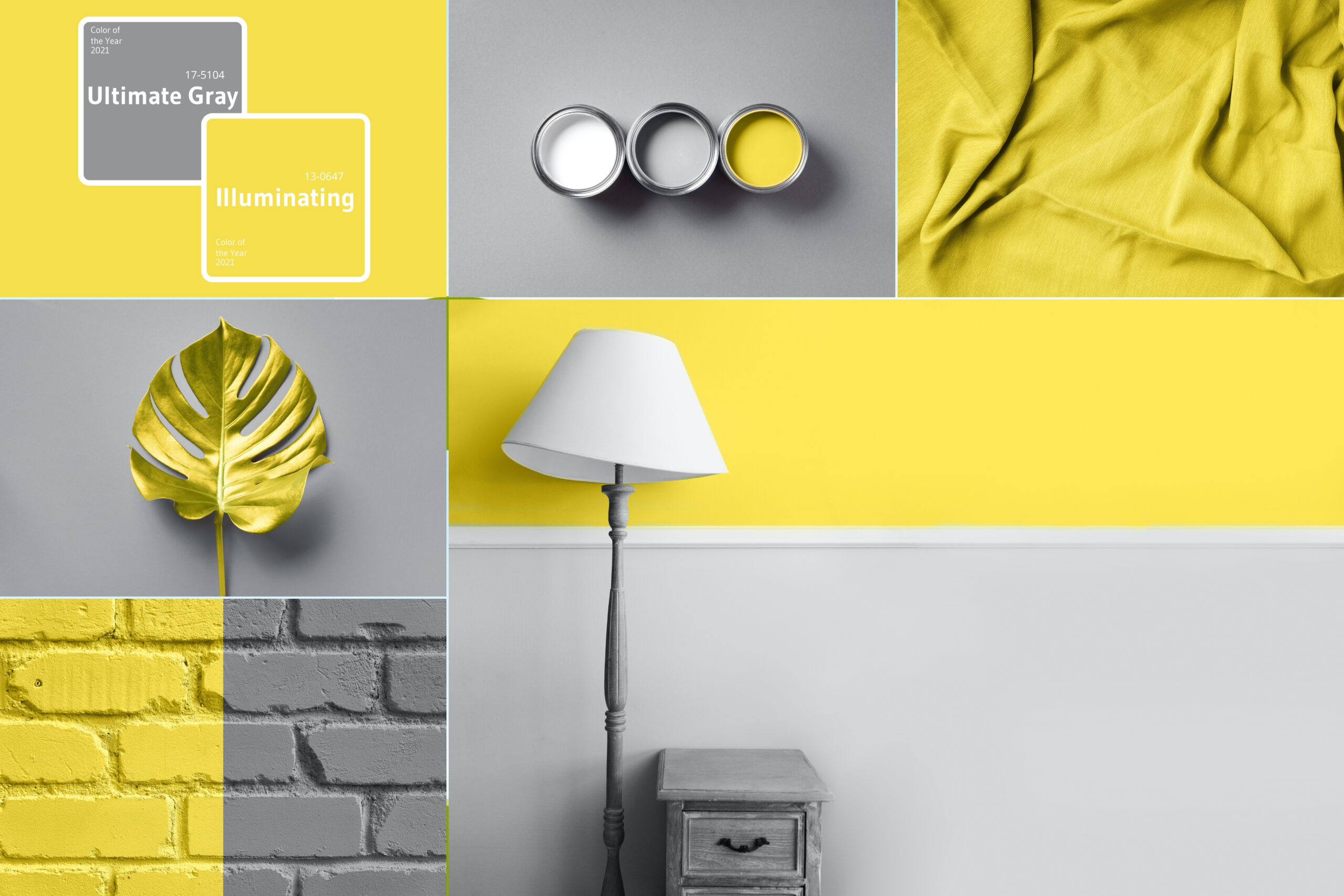
One of the easiest ways to bring dopamine décor into your home is through color. While traditional design often leans on neutral tones for a “timeless” look, dopamine décor embraces bold, uplifting hues. Warm yellows, energetic oranges, and soothing blues can each evoke different emotions, shaping the energy of a space. Instead of designing around what’s considered “elegant” or “trendy,” people are choosing colors that simply make them happy.
Color doesn’t have to be extreme to make an impact. Even small pops—like a bright pillow, a painted accent wall, or colorful kitchenware—can transform the feel of a room. The key is to surround yourself with shades that create a positive emotional response. Whether it’s soft pastels for a dreamy, calming effect or vibrant reds and pinks to add excitement, color is one of the most powerful tools in dopamine décor.
3. Sentimental Décor – Designing With Meaning
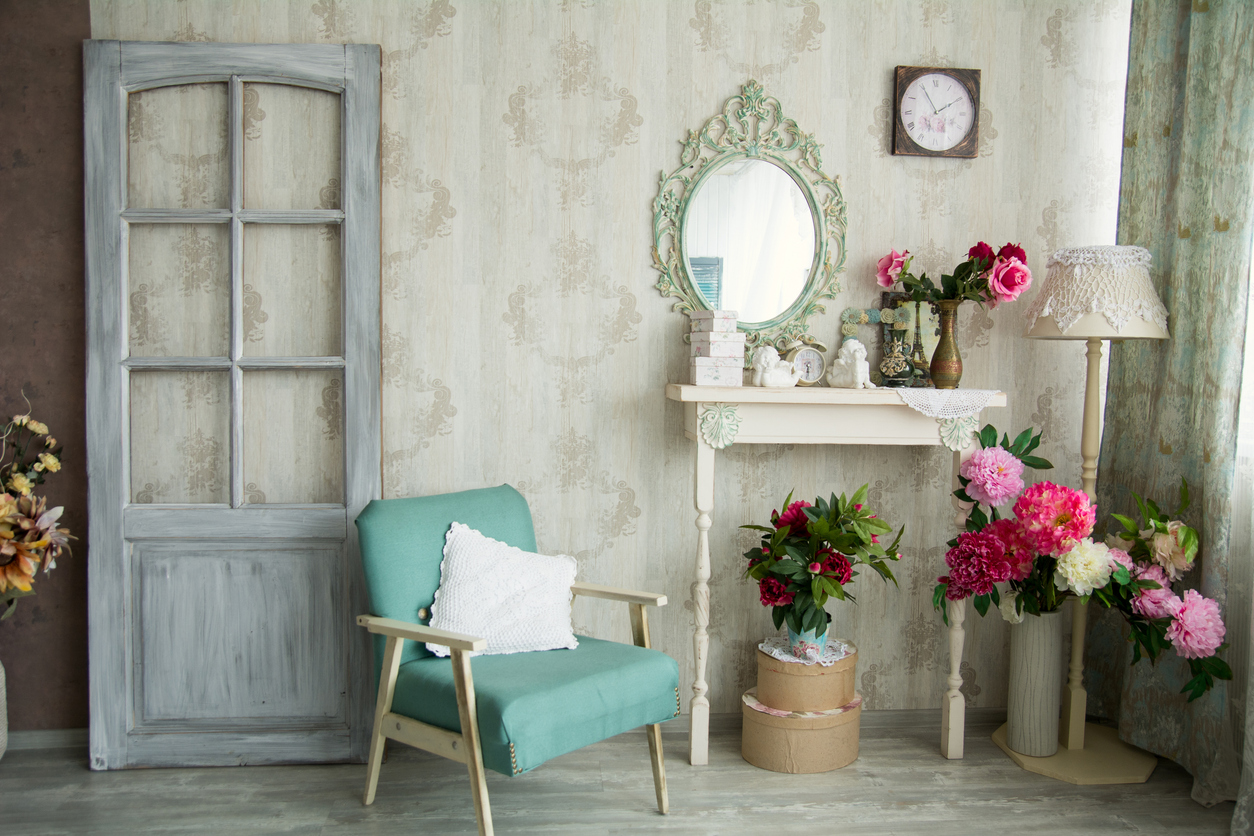
Dopamine décor isn’t just about aesthetics—it’s deeply personal. Instead of buying mass-produced art or generic furniture, people are incorporating items that hold sentimental value. Family heirlooms, travel souvenirs, and handmade crafts bring a sense of connection and nostalgia. These pieces tell a story, making a home feel truly lived-in rather than staged.
The best part about sentimental décor is that it doesn’t follow any design rules. A room filled with meaningful objects instantly becomes more comforting and unique. Whether it’s an old quilt passed down through generations or a wall covered in polaroids from your favorite trips, these details add warmth and joy. It’s about surrounding yourself with things that make you smile, not just things that look good on Instagram.
4. Playful Patterns – Breaking Free From Minimalism
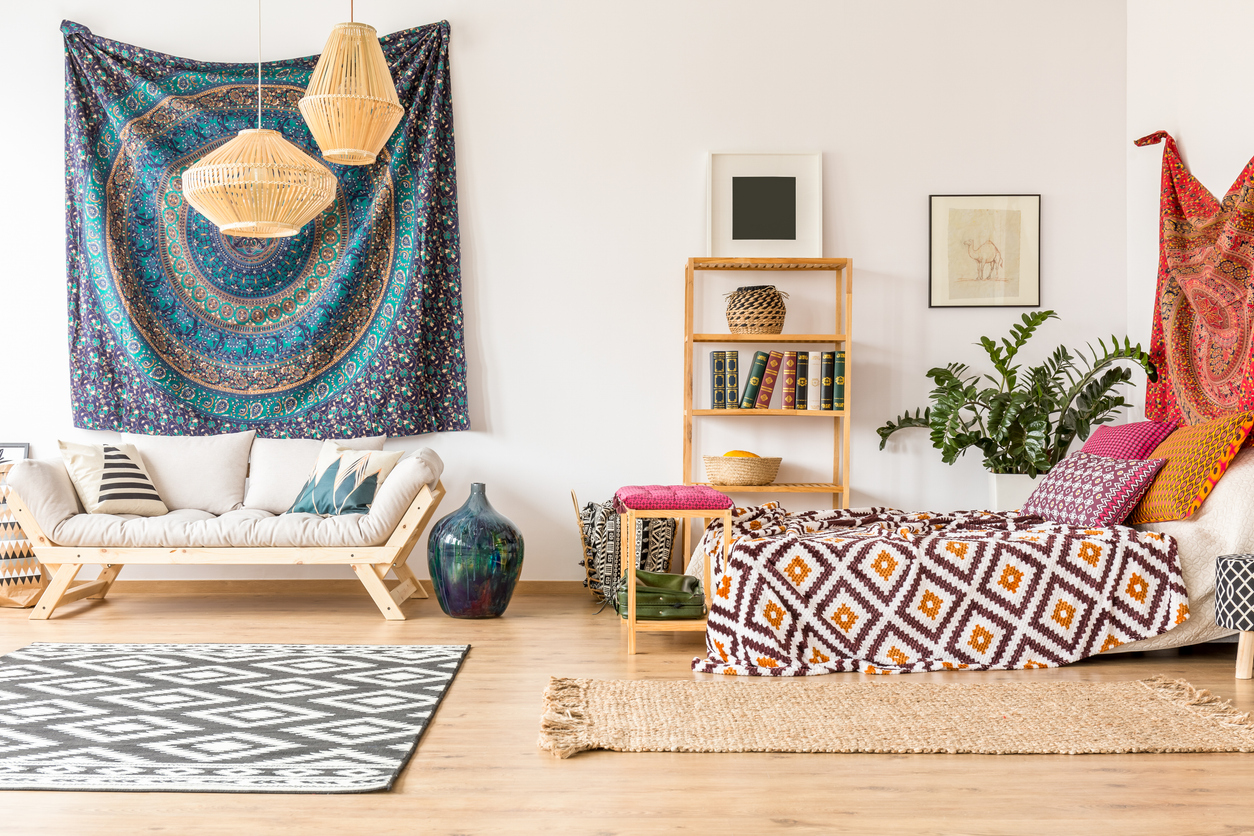
For years, minimalism dominated interior design, promoting clean lines and neutral tones. But dopamine décor throws that rulebook out the window, embracing bold patterns, mixed textures, and playful prints. Stripes, florals, and abstract designs add movement and excitement, turning an ordinary room into a space that feels dynamic. This shift is about bringing fun back into decorating, making homes feel more spontaneous and less rigid.
Mixing patterns can feel intimidating, but it’s all about balance. Pairing geometric designs with organic shapes, or layering different textures, creates a visually rich environment without feeling chaotic. Even small touches, like a funky rug or patterned curtains, can instantly lift the mood of a space. The goal isn’t to match everything perfectly but to create an atmosphere that feels expressive and full of life.
5. Interactive Spaces – Designing for Engagement
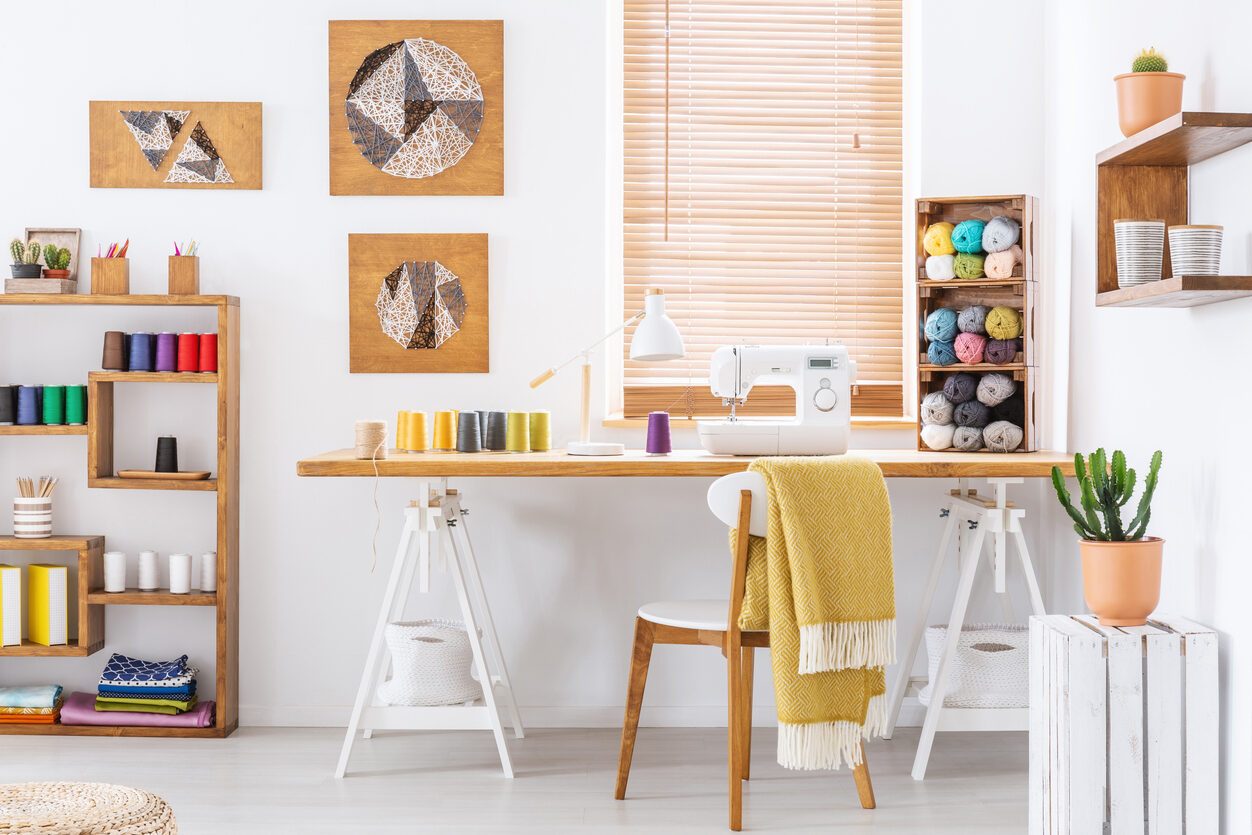
A happy home isn’t just visually appealing—it’s interactive. Dopamine décor encourages spaces that invite movement, creativity, and play. This could mean setting up a cozy reading nook, adding a swing chair to the living room, or even creating a designated spot for hobbies. Homes designed for engagement naturally encourage relaxation and self-expression, making them feel more like a retreat than a showroom.
Interactive spaces don’t have to be extravagant. Something as simple as a corner with art supplies, a record player, or a puzzle table can make a home feel more personal. The idea is to design around activities that bring joy rather than just focusing on what looks aesthetically pleasing. A home should be a place where you can truly be yourself, and incorporating elements that inspire action makes everyday life more enjoyable.
6. Statement Furniture – The Power of One Bold Piece
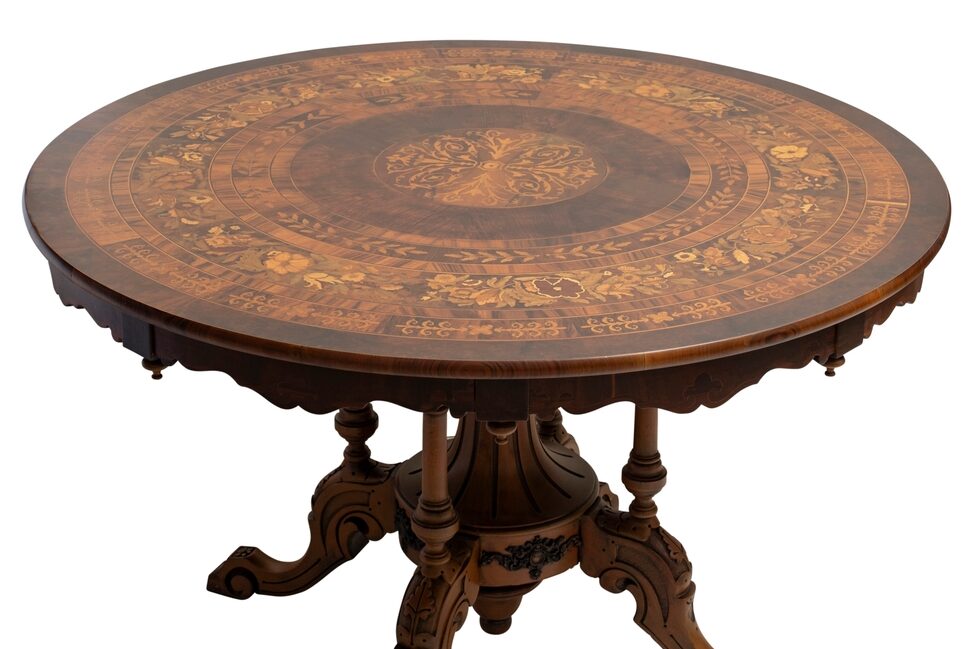
Dopamine décor thrives on standout pieces that instantly spark joy. Instead of filling a home with safe, conventional furniture, this design approach embraces bold choices—like a velvet pink couch, a quirky bookshelf, or a neon-lit coffee table. These statement pieces become the heart of a room, adding personality and fun. It’s not about being loud for the sake of attention but choosing furniture that makes an emotional impact.
Statement furniture doesn’t have to mean buying new items—it can also be about upcycling and repurposing. Painting an old dresser in a bright color or reupholstering a vintage chair in a playful print can breathe new life into existing furniture. The goal is to create a space where every piece contributes to a sense of joy and individuality. A single bold element can transform an entire room, making it feel more vibrant and inviting.
7. Sensory Elements – Engaging More Than Just Sight
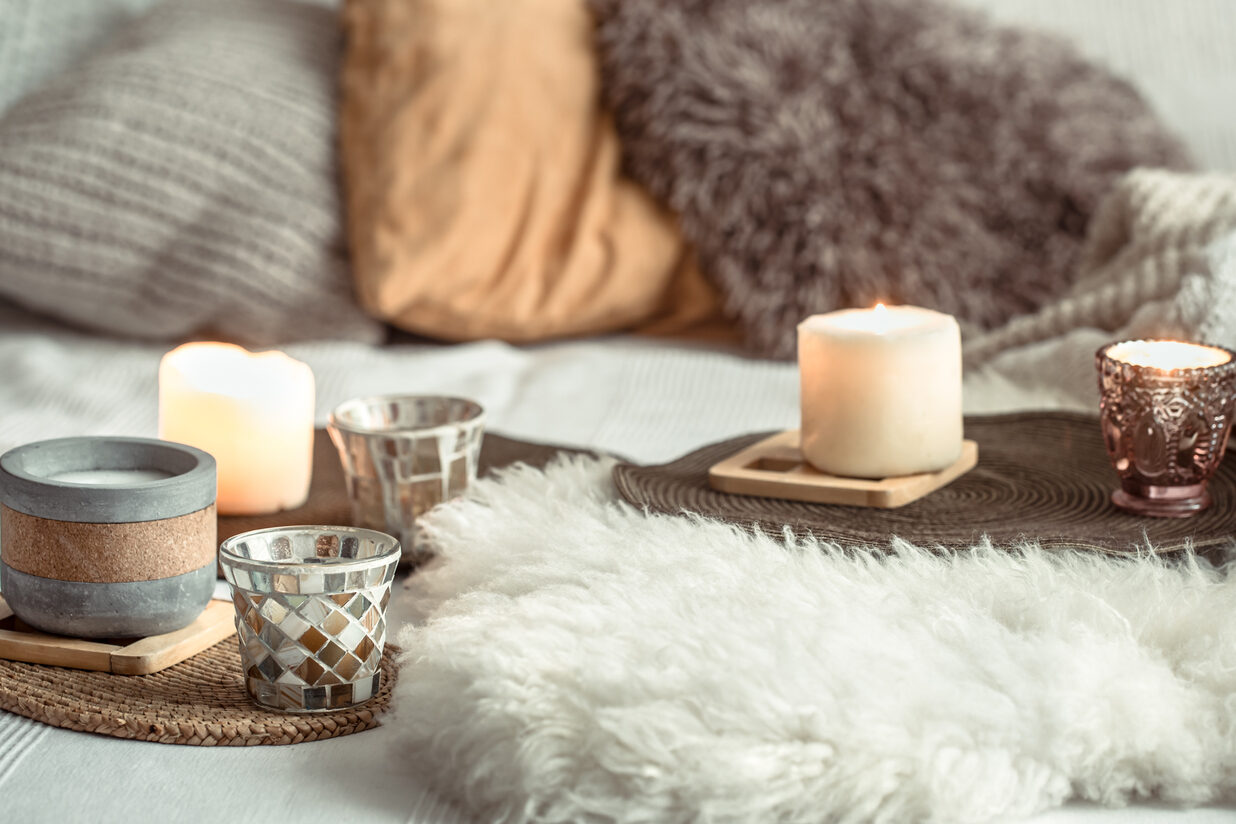
Dopamine décor isn’t just about what you see—it’s about what you feel, hear, and even smell. Engaging multiple senses creates a richer, more immersive home experience that naturally boosts happiness. Soft, plush textures like velvet cushions, fluffy rugs, or cozy throws invite touch, making a space feel warm and comforting. Meanwhile, calming scents like lavender or citrus can influence mood, making a room feel more relaxing or energizing.
Sound plays a role, too. Instead of sterile silence, dopamine décor encourages homes filled with life—whether that’s music playing in the background, the gentle sound of a tabletop water fountain, or the crackle of a fireplace. These sensory layers turn a house into a full experience, making it a space that nurtures joy and relaxation. The more you can engage your senses in positive ways, the more inviting and uplifting your home becomes.
8. Eclectic Collecting – Curating Happiness Over Perfection
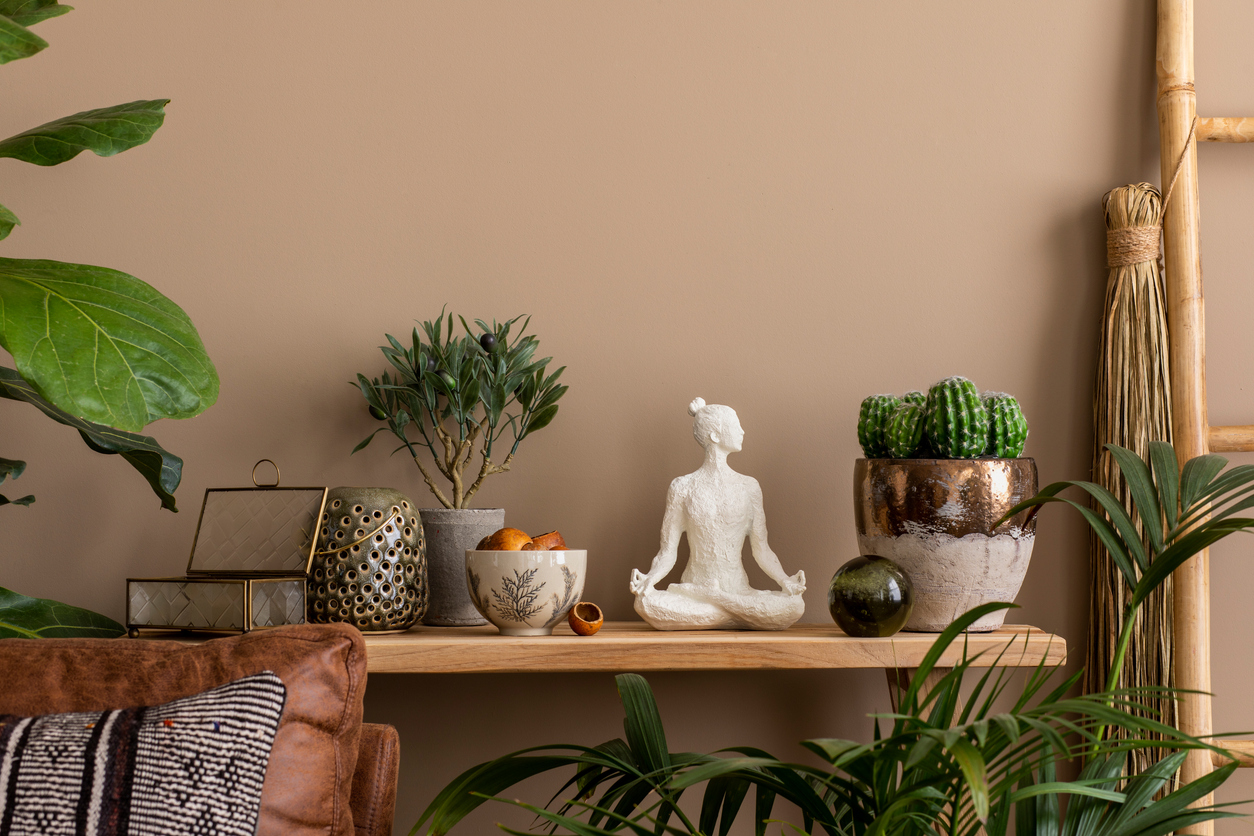
Dopamine décor thrives on personality, which means curated collections often take center stage. Whether it’s vintage glassware, colorful ceramics, or quirky figurines, unique collections add a sense of playfulness and individuality to a home. Unlike traditional decorating, where symmetry and uniformity reign, this style embraces a mix of different shapes, colors, and time periods, creating a space that feels both lived-in and dynamic.
Collecting isn’t about hoarding; it’s about intentionally surrounding yourself with objects that make you happy. The key is to display items in a way that tells a story rather than cluttering a space. Open shelves, gallery walls, or dedicated display cases allow collections to shine without feeling overwhelming. When a home is filled with pieces that reflect personal joy, it naturally becomes a more uplifting space.
9. Maximalist Art – Big, Bold, and Expressive
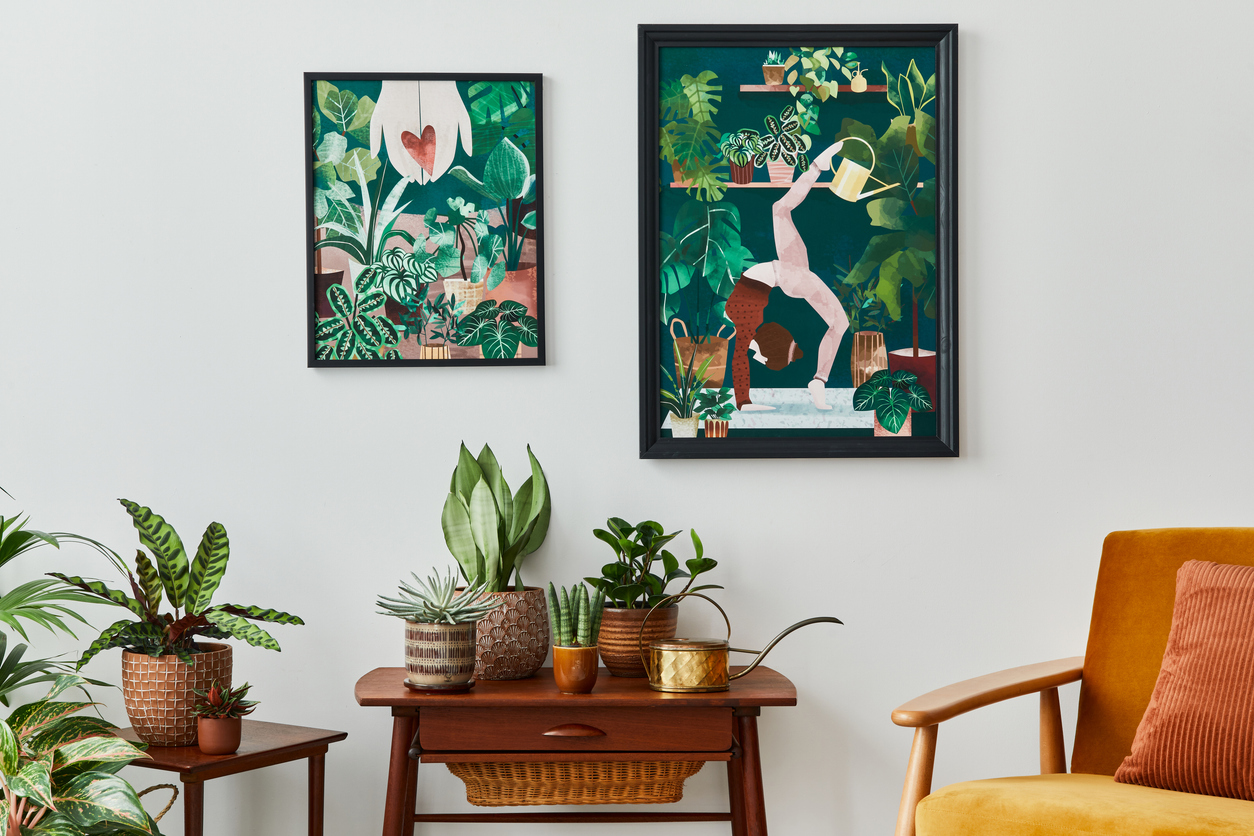
Wall art in dopamine décor is anything but subtle. Oversized prints, colorful paintings, and playful murals are replacing the minimalistic black-and-white photography trend. The idea is to turn blank walls into a source of inspiration, excitement, or nostalgia. Art choices are deeply personal, with many people opting for pieces that remind them of happy memories, places they love, or abstract designs that spark creativity.
Maximalist art doesn’t mean filling every inch of space—it’s about choosing pieces that evoke strong emotions. A single large painting with vibrant colors can completely change the energy of a room. For those who love variety, creating a gallery wall with a mix of framed posters, personal photos, and handmade art can bring an extra layer of warmth. The beauty of dopamine décor is that there’s no right or wrong—if it makes you smile, it belongs on your wall.
10. Whimsical Lighting – Illuminating Joy
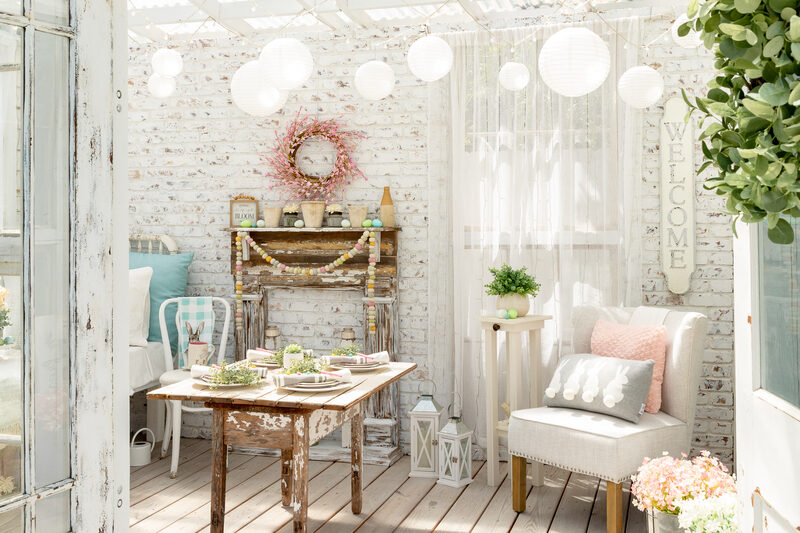
Lighting is often overlooked in design, but in dopamine décor, it plays a key role in setting the mood. Instead of relying solely on traditional overhead lighting, this approach encourages a mix of fun and unexpected sources—think neon signs, fairy lights, and colorful lampshades. The goal is to create a lighting scheme that feels warm, inviting, and a little bit magical.
The right lighting can make a space feel more playful or soothing depending on the time of day. Dimmable lamps and string lights add a soft, cozy glow in the evening, while daylight bulbs mimic natural sunlight to boost energy levels during the day. Even quirky choices, like a mushroom-shaped lamp or a retro lava lamp, can bring an element of joy. The idea is to move away from harsh, sterile lighting and instead embrace a setup that makes every corner of a home feel welcoming and full of character.
11. Mood-Boosting Plants – Bringing Nature Indoors
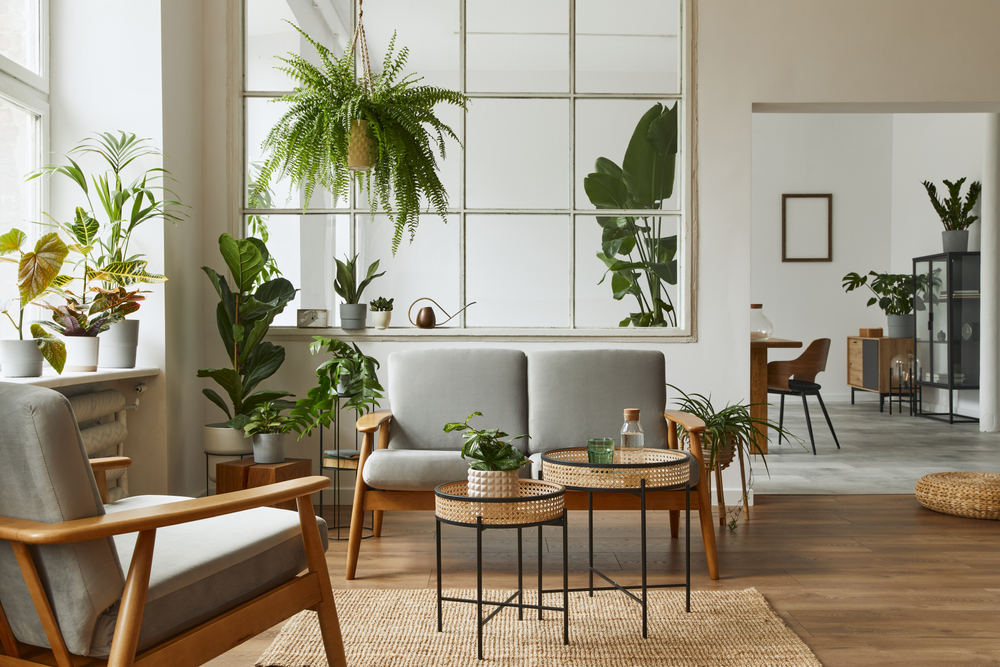
Nature has a direct impact on happiness, which is why plants play a major role in dopamine décor. From lush hanging vines to oversized potted trees, greenery instantly makes a space feel fresher and more vibrant. Plants not only improve air quality but also create a sense of calm and connection to the outdoors. Bright blooms like sunflowers or orchids add an extra dose of color, enhancing the cheerful atmosphere.
For those without a green thumb, even artificial plants or nature-inspired artwork can bring similar mood-boosting effects. The key is to create a home that feels alive rather than sterile. Arranging plants near windows, incorporating floral prints into textiles, or using botanical wallpapers can all make a space feel more natural and uplifting. When a home feels connected to nature, it becomes a more relaxing and joyful place to be.
12. Breaking the Rules – Designing for Happiness, Not Trends
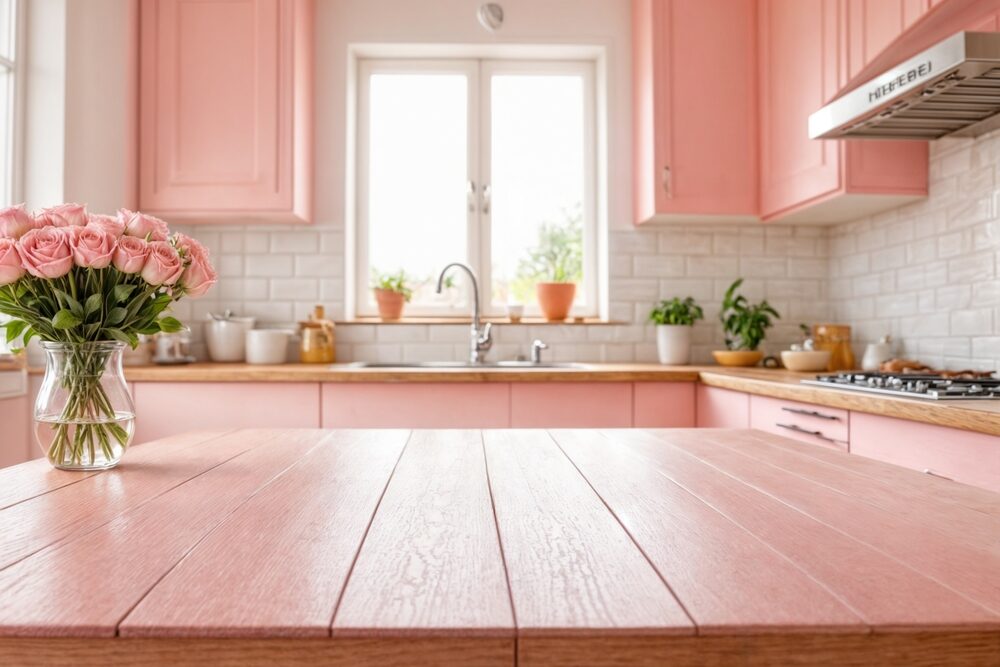
At its core, dopamine décor is about designing for personal happiness rather than following strict rules. Traditional interior design often focuses on what’s “in style,” but this approach is about what feels good. If a bright pink kitchen makes you happy, go for it. If mixing five different patterns in your living room brings you joy, embrace it. The only rule in dopamine décor is that there are no rules—your home should reflect what makes you feel best.
This mindset shift is freeing. It allows people to break away from the pressure of creating a Pinterest-perfect home and instead build a space that genuinely supports their well-being. When you decorate for yourself instead of for approval, your home becomes more than just a place to live—it becomes a source of daily happiness. And at the end of the day, isn’t that what a home should be all about?


